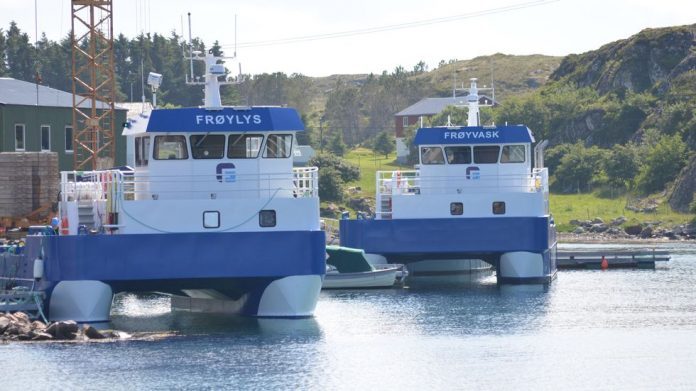Increased wages and operational costs weakened profitability for the service vessel industry in 2017.
In June SalmonBusiness published an overview of the ten biggest service vessel companies. Rambøll consultant Einar Stephansen said the next step in the analysis was to examine developments in profitability for these companies.
Stephansen has now analysed the accounts for 31 of the 60 Norwegian service vessel companies that were operative in 2017, and his conclusion is crystal-clear: Profitability is declining and the operational economics of the service vessel industry has weakened.
Total turnover for the 31 companies amounted to € 130 million, which is 55 percent of the total turnover for the service vessel industry. This is up 30 percent from 2016 when turnover was € 100. EBITDA amounted to € 35 million, up 22 percent from 2016.
However, pre-tax profit ended up at € 14 million for the 31 companies, down from € 15 million in 2016 – a reduction of seven percent.
“There’s several reasons for the lower earnings. The analysis of incoming accounts shows that revenue from the operation of vessels is on a par with 2016. The reason for the reduced revenue lies on the cost side, where both wage and operating costs have increased more than revenue,” Stephansen told SalmonBusiness.
Major costs in large companies
He pointed out there are considerable difference between companies.
“Costs have increased more in the big companies compared to the small. In the large companies the increase in wage costs is substantial. We believe this is due to that smaller companies have a more flexible operation than their larger counterparts.
Rambøll has 325 service vessels registered. 2017 saw 50 new and second-hand vessels arrive in the service vessel industry.
“Total investments in the 31 companies amounted to NOK 675 million. Major investments result in depreciations that weigh down pre-tax profit. Depreciations increased by 58 percent in 2017, although these do not affect cash flow. With an EBITDA of NOK 350 million the capacity for self-financing is still excellent,” Stephansen said.
Increased capacity is firmly imbedded in assignments carried out for the industry
In 2017 revenue earned from vessel operations, in the analysed companies, was on a par with 2016.
“Our preliminary analysis shows that increased capacity is phased firmly into assignments carried out for the marine farming industry. This will be analysed further once all accounts become available. More than 30 new vessels will be entering the service vessel industry in 2018. The analysis provides the basis for assessing the phasing-in of such a large number of new vessels. We will pay particular attention to the accounts of the companies specialising in the de-lousing sector. We will also be unearthing differences in the operational economics of new vessels versus older vessels, “concluded Stephansen.
A complete overview of the financial status of the service vessel industry will be available in August.


